|
|
Post by aubrey on Jul 30, 2016 17:31:53 GMT
(I've done this on another board, so I'm copying it over here: just to push Jess really.) ________________________________________________________________________________________________________________________________________________ Over the next few months, and probably years, I intend to watch all the Jess Franco films I have in my collection, in as near chronological order as I can get it. There are 160 odd, though this will change if I find more; and at the moment I am missing some from the early 60s and a few from the 80s, plus one or two more. I have referred/ will refer extensively to Stephen Thrower's magisterial Murderous Passions: the Delirious Cinema of Jess Franco, an indispensable book for any serious student of Franco: though volume two, covering the period from about 1975 to 2012, isn't out yet and if I get there before it is published I'll have to rely on Wiki and Imbd and a few exploitation blogs.  (From a random blog): Jesús Franco Manera (1930-2013), better known to most of us as Jess Franco (and also by dozens of other pseudonyms), was perhaps the most prolific filmmaker of modern times. By IMDB's count he made 195 feature films.
Many see nothing in Franco's films beyond a tangle of horror film paraphernalia, naked bodies, snap zooms, jazz music and art film in-jokes, but the value of Franco's films lies in his unique eye, which finds photographic beauty and musical reverie in all these elements.
Fritz Lang called Franco's SUCCUBUS "the first erotic film I've seen all the way through because it's a beautiful piece of cinema". Orson Welles chose Franco to be his Spanish assistant director on the strength of one of Franco's surreal, pulpy crime thrillers - much to the horror of the Madrid establishment who scorned Franco.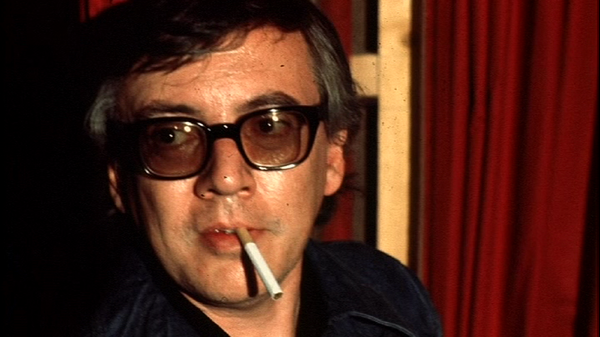 Uncle Jess:  Ain't it Cool News: Franco committed himself to cinema after determining he had limited prospects as a jazz trumpeter. Though he had studied music at Real Conservatorio de Madrid, he believed himself to be only an adequate trumpet player. Franco might've improved, but the life of a jazz musician paled in comparison to the robust life of a filmmaker. As he explained to The A.V. Club in 2009, "The life of a moviemaker can be glorious and wonderful. It can put your life in the best of possibilities. I decided to forget music. Not forget, because this is impossible, but to work in cinema, and just to be someone who loves music, and who tries to make music with his films.Being presented the Goya award with Lina Romay:  What I will watch: There are alternative versions of several films that are drastically different: for instance, the Spanish "Clothed" version of The Erotic Rites of Frankenstein (La Maldicion de Frankenstein, as well as ditching all the nudity, makes up for it by including a side plot - unrelated to the rest of the film - featuring Lina Romay, in what seems to have been her first appearance in a Franco (or any other) film, so I will have to watch that; and Female Vampire ( The Bare-Breasted Countess; Erotikon, etc) exists in at least three versions, one in German with a few clumsily done (by someone else, not Franco) hard-core inserts, one for the US market (in English) in a much shorter form with no sex or nudity (as far as I know; I've not seen it), and the standard French version. Usually I'll decide what to include as I get to it. Rationale: This might seem like a pointless thing to do, especially as he has made a few films that are pretty much unwatchable; but when he's good Jess is like no one else, and even when he's bad he nearly always has something that no one else has, that makes it worth watching. I started this a couple of months, so there's be a few entries quite quickly then it will slow down. Some of these films are on Youtube or Vimeo; I don't expect it, but if anyone is interested in seeing any that aren't, please pm me. |
|
|
|
Post by aubrey on Jul 30, 2016 17:41:25 GMT
Ok, here we go: 001 Tenemos 18 años aka We Are 18 Years Old (1959) With: Isana Medel Terele Pávez Antonio Ozores Luis Peña Two girls (Isana Mede and Terele Pávez) are writing the story of what they did on their holidays (a road trip), and then telling each other (after a flashback), that the events they have written really didn't happen like that: that the Werewolf/ Phantom of the Opera/Jack The Ripper, who only struck every 50 years and ended up by killing one of them, was in truth a sad drunk who was quite nice really, and didn't kill anyone ( How could he have killed you when you're still here? the other girl says), and that the nice priest who helped with their car was actually quite aggressive and scary. There is a kind of sub plot about their cousin (Antonio Ozores: who seems to have been a fairly well-known comic actor: his humour is very broad) continually trying to scrounge money from them, using excuses that are more and more bizarre (though he always wants the same amount – 500, which one of the girls has to remind him of when he accidentally says 100 one time); the men on their journey who try to rip them off all look a lot like him as well, though they don't seem to notice this. The cousin sells them the car they use for the holiday, which is like an old fashioned car from a Punch cartoon, but yellow instead of black. The film has some odd bits of realism as well, odd for a comedy anyway: the two girls are cousins, but one is living with the other's family because her own parents were killed in the civil war: and later, an escaped prisoner (Luis Peña) they meet tells one of the girls about his ghastly childhood, parents dead, scrabbling for food, tripping over dead bodies in the street, etc ( The first time you cry out; then it seems normal) (this section was cut by the Spanish censors). There is a putting away of childish things ending, that seems to go against the rest of the film (and against the rest of Jess's films as well), and though it's supposed to be a positive ending it's really quite sad. The music is fine: jolly dance band comedy music most of the time, with an atonal/prepared solo piano part (played by Jess himself), during the Phantom of the Opera bit. I missed a bit through dozing off (I'd been ill), and when I watched the bit I'd missed again it was like falling into a comfy chair, or coming back home, or something: it has a really nice 50s European feel to it, with some Míro-like Andalusian landscapes (I think I mean Míro anyway), and a distinctive, faded colour scheme. Not great Jess, and there is none of the roving, zooming camera and sweaty obsessiveness that one associates with his films, but it is sweet-natured, funny, and very enjoyable. A nice 50s animation style title sequence:  The cousin says they're going to break his legs unless he gets 500: 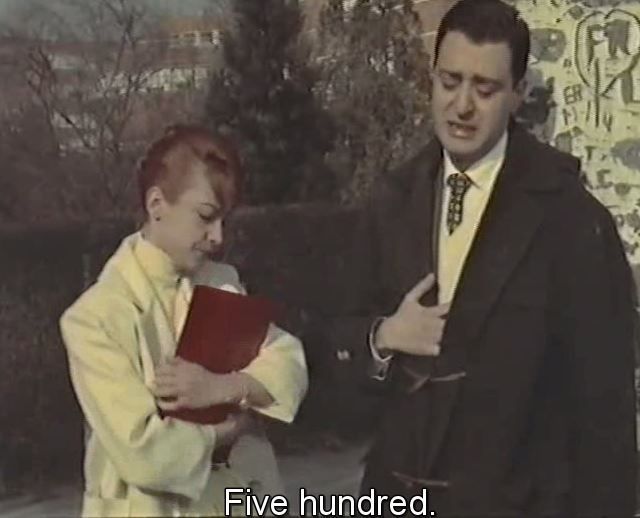 The Phantom's story: 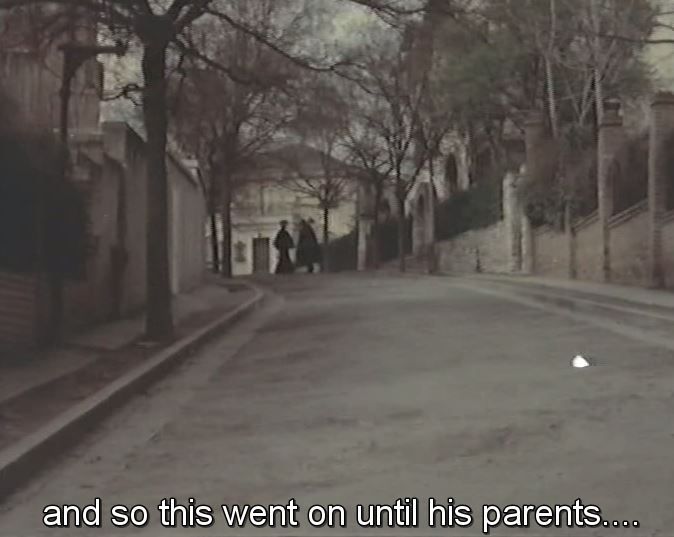 Spanish Surrealist background: 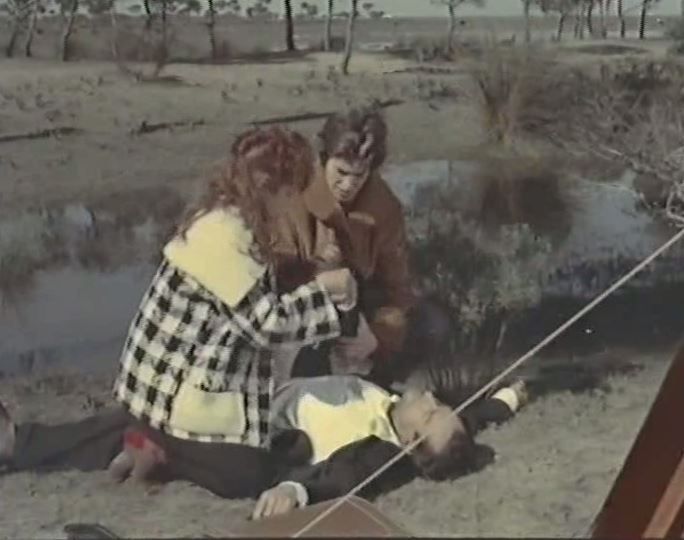 The escaped convict explains how he came to be that way: 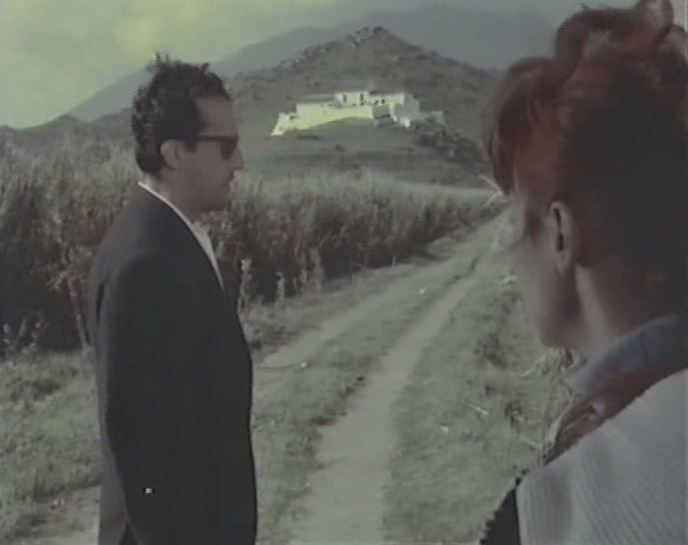 He walks towards the border, and (he hopes) freedom; Isina (Jess's Fiancée at the time) wants to stop him but doesn't: 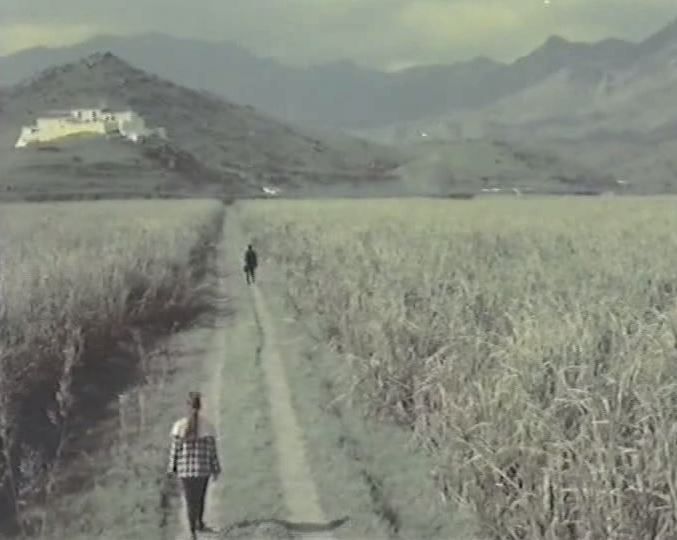 The whole film is below; it is worth watching (and entirely safe for work). We Are 18 |
|
|
|
Post by aubrey on Jul 30, 2016 17:53:48 GMT
I am missing the next film, Labios rojos (Red Lips), 1960. It is about an all female detective agency, and like the first film it starred Isana Medel (she and jess were engaged). Jess is supposed to have been unhappy with her performance, and they seem to have split not long afterwards.
|
|
|
|
Post by aubrey on Jul 30, 2016 17:56:13 GMT
002 La Reina del Tabarin (Queen of the Tabarin Club) 1960
%201.jpg)
BFI synopsis: A young aristocrat falls in love with a gypsy-girl the day of his engagement. After a fight in which the young man is injured and convalescent for a while, he returns to his love, the gypsy-girl, who has became a well-known artist in Paris – but the story is really told from Lola's point of view.Or from Luis Balbo: Madrid, 1913. Lolita is a pretty Gypsy girl who dances in the streets for a living while her uncle Pepe plays the barrel organ and her brother passes round the hat. One night Lolita is attracted by the sounds of a party. She introduces herself and dances for the guests. She is rewarded with a meal and meets the son of the house, Fernando. Attracted by the vivacious young girl, Fernando passes himself off as Roberto, a waiter, and though he is engaged to the beautiful Monique de Segur, he falls in love with Lolita.
When Lolita learns of the engagement, she challenges Fernando to choose between them. He promises to marry her and arranges to elope with her that night. On his way to the assignation Fernando provokes a duel in which he is wounded and is thus unable to join Lolita. The broken-hearted girl leaves Madrid for Paris. There, she becomes the pupil of the Milanese maestro Picardi and begins a new career as "Lola Miranda"...This is a musical (in the way that Cabaret was a musical, with the songs and performances given as being real) telling the story of Lolita, a street singer (Mikaela - Micaela Rodríguez Cuesta), as she rises to playing to Royalty at the Tabarin club in Paris: on the way finding, losing, and finding love. (I think the BFI gets it the wrong way about, as the story is definitely from Lola's point of view.) It opens on a scene of her performing in a crowded market, with her uncle on the barrel organ. It is a joyful, exuberant scene, her performance better or at least more enjoyable than those that come later; in one Fall-like moment the uncle starts turning the handle more slowly, seemingly to enjoy the effect, before she gestures impatiently at him to get it together, for Christ's sake, and speed it up. There is a cut to a man (Fernando, played by Yves Massard) in a carriage promising undying love to the woman with him, before getting out of the carriage and going to see another woman where he does the same. Obviously, they meet, and despite the difference in their social class, fall in love, his philandering forgotten (though his mother does warn Lola about it). Now I lost the plot a bit. The film has no subtitles, and my Dora the Explorer level of Spanish only allowed me to make out odd mentions of houses, a crown (maybe), friends, and someone saying “Come on”, so I found the subtleties of the dialogue hard to follow. There is a visit to Lola's house, where the couple find all the family asleep in bed, a fight Lola has with a neighbour woman, and a duel that Fernando fights in her honour, where he deliberately shoots into the air. Meanwhile, Lola performs at a salon where she is sneered at for being of the People, and then takes singing lessons (where, for the first time, she sings out of tune). At one point she is supposed to meet Fernando, but he doesn't turn up because he has been injured in the duel, so she resolves to have nothing more to do with him and gets on with her career. At the climactic performance, on New Year's Eve, he turns up at the Tabarin but she spurns him, before being told – I think by the man who Fernando fought the duel with – what really happened, and persuaded of his fidelity: and then, after her triumph, they walk out together in the cold dawn. I missed a lot of it, and found the plot-explaining bits tedious, but there was generally enough to keep one interested, even without knowing what anyone was saying. It is a good natured and humorous film, with one or two Franco touches, even though it was a film that he took on as a way to get his name known. Soledad Miranda (who was a few years later to become Franco's muse) has a small part: but I did not see her, and from the clip that is on Youtube it seems that my copy had that bit cut (maybe because of a close-up of the Can-Can dancers' legs just before). One scene that was baffling was the way the characters guzzle down grapes while the chimes for the new year are being struck (on a gong). I looked this up and it seems that it was a Spanish tradition stretching all the way back to 1895 or 1905, designed (if you manage to get down 12 grapes before the chimes have finished) to bring good luck, or keep off witchcraft or something. The film features a proto-steadi-cam effect, where Mikaela steps onto the dolly so the the scenery moves about behind her while she is singing. This is the cut scene with Soledad Miranda.I don't know if Lola being called Lola Miranda is a coincidence or what. The street singer: 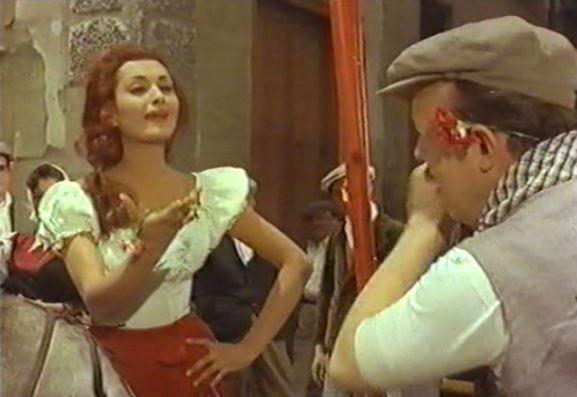 The fight: 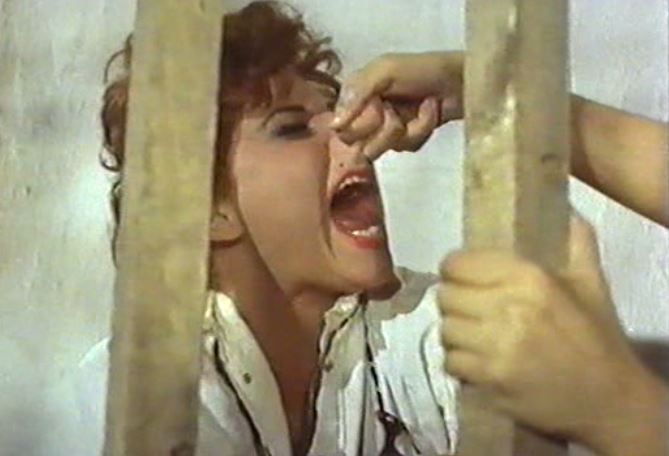 The Duel: 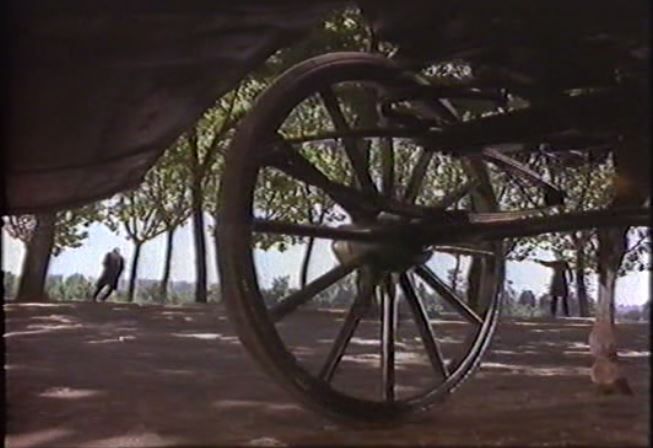 Came the dawn: 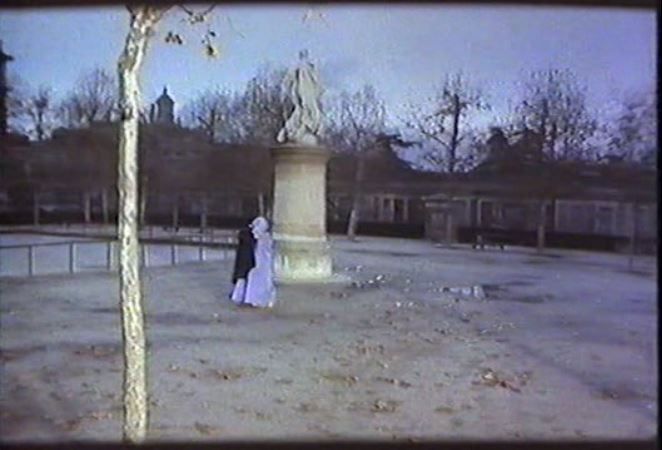
|
|
|
|
Post by aubrey on Jul 30, 2016 18:04:51 GMT
003 Vampiresas 1930 (Gold Diggers of 1930)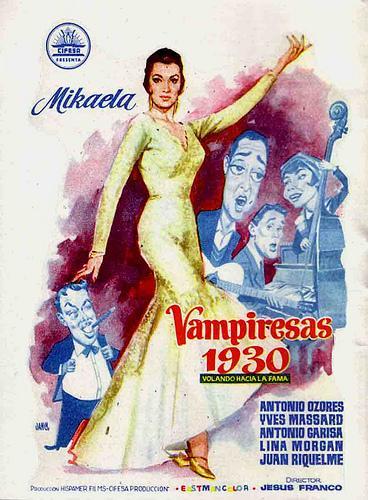 Mikaela Antonio Ozores Lina Morgan Yves Massard A cross between Singing in the Rain and Some Like it Hot, and another one I don't have subs for.There is a lot of stuff in the first half about the French film industry, where Yves Massard ( La Reina del Tabarin) has a job (in return for food) playing the violin to comfort a sensitive actress (Mikaela, La Reina del Tabarin) when she collapses due to loud sounds, etc; all she really wants to do is to get back to her dressing room to eat cheese, where Yves visits and courts her (seemingly successfully). Meanwhile, Yves and Antonio Ozores (the cousin from Tenemos 18 años) meet an out of work circus girl (Lina Morgan) and invite her to join their band, on bass. Later, the four of them, out of work due to their studio (run by Antonio Garisa, again from La Reina del Tabarin), having closed down, are sitting shivering in the park. They find a load of bank notes being blown by the wind, which we know (but they don't) are from the pocket of a dead man who has been killed by a counterfeit money printing gang and left in some bushes. A policeman comes, sees them acting suspiciously, and then, when they have gone (with their worthless money) he finds the body. So our heroes are now being chased by the police, and by the counterfeiters. At the railway station they trick a Negro band into getting on the wrong train (to Siberia: this is really the only sour note in the whole film), and stand-in for their appearances, all blacked up and in drag. There is an climax something that of like Some Like it Hot, and it all ends happily, with (I think) the studio re-opening. I did not understand a lot of this – there are no subs to be had at any price, so a lot of the time I was just waiting for the dialogue to finish and some action to start. The title sequence (a homage to a silent film serial, Les Vampires, about criminal mastermind) and blacked-up bits were the best – this was done innocently enough, a good 20 years before we stopped doing it here – and the actors do not mug any more in black-face than normal. There are some good bits in the actors' home - a big lodging house - as well. It was ok, not really Jess: he did not write it, though he shot it well enough. The last song - which the band play while being menaced by off-stage bandits with guns - was written by Jess; another song ( La mer) was reworked by Bobby Darin as Into the Sea. Mikaela upstaged by Lina Morgan: 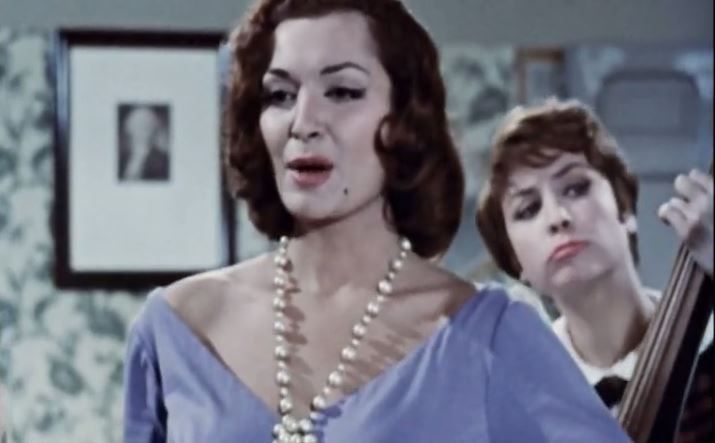 The band: 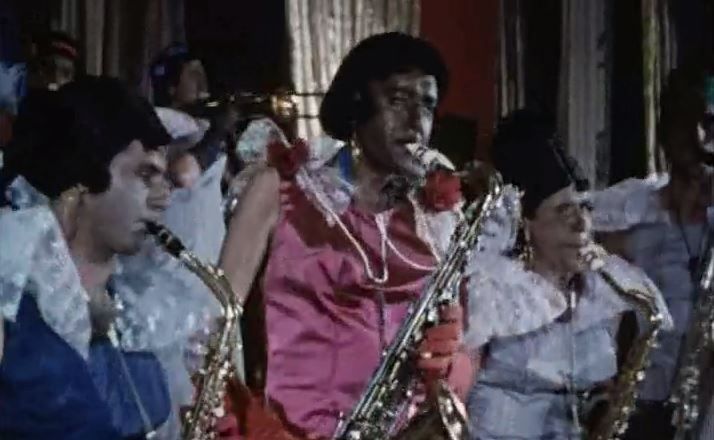 Some Joe E Brown shenanigans: 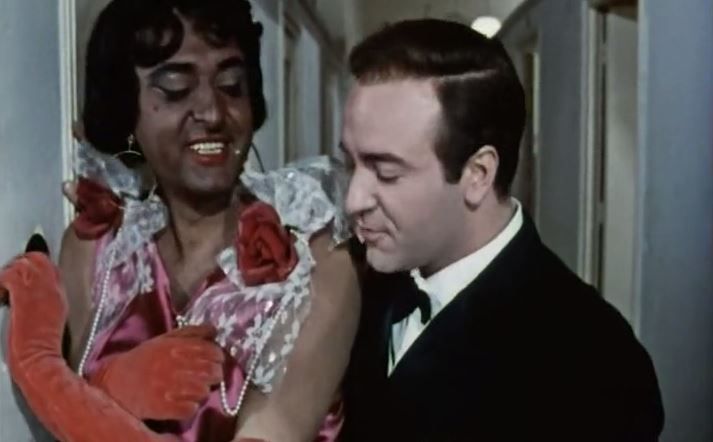 You can see the whole thing here You can see the whole thing here (The first 2-3 minutes are good, at least).
|
|
|
|
Post by aubrey on Jul 31, 2016 11:01:00 GMT
004 The Awful Dr Orlof (1962) Howard Vernon Diana Lorys Conrado San Martín Ricardo Valle Perla Cristal The first real Jess Franco film, and possibly his most famous (though not his best). Dr Orlof (Howard Vernon) an ex-prison doctor, abducts young women and tries to use their skin to repair his daughter's scarred face; he is stopped by a spunky young ballerina (Diana Lloys) and her klutzy police inspector boyfriend (Conrado San Martin). Obviously ripped off Eyes Without a Face, though Franco claimed not to have seen it before he started on Orlof. There's no reason for him to have lied, and he was usually quite open about his various liftings (see that previous film), so maybe it was an "Idea in the air" as he said. The film is set in a country somewhere between France and Germany. It starts with a very drunk woman making her way home across a darkened square, accompanied by a soundtrack of loud percussion (two comments on IMBD complain about this cacophony, but really it is one of the best bits of the film: a normal creepy string soundtrack would not be anything like as effective). Anyway, the woman gets inside and undresses, before going to her wardrobe and being attacked by the half human figure hiding there. This is Morpho (Ricardo Valle), who seems to be a have been named for his somnambulism. He takes the body back to Dr Orlof's. The skin graft doesn't work, again: and then Orlof realises what the problem is. Up to now he has been using the skin of dead women, when he what should really have done is taken a graft from a living subject. The horror of this – when he eventually does it, does not come over, though Orlof's callousness is chilling – Keep her alive – I might need her for something else.The policeman's girlfriend decides to help him by acting as a decoy, and once she attracts Orlof, leaves a message for him to pick up: but, exasperated by all the false leads he has already been given, he doesn't even open the envelope until it is almost too late: and even then, without the help of a drunken vagrant... The story is predictable, and the dubbed dialogue terrible: what makes this film worth watching is the photography of the rain-washed streets at night and of the ruined mansion Orlof takes one of his victims to: and Orlof himself (Howard Vernon in the first of maybe 30 films he made with Franco), driven mad long before the film starts, possibly by what has happened to his daughter, possibly by something at the prison, since his actions there (related in chunks of info-dump dialogue) seem more than a bit odd. There is also a few seconds of toplessness: not worth watching the film for but quite startling, given the date. Orlof and Morpho: 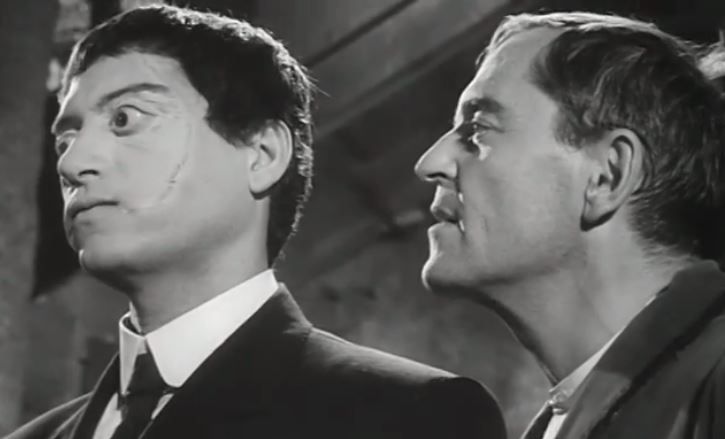 Night scenes:  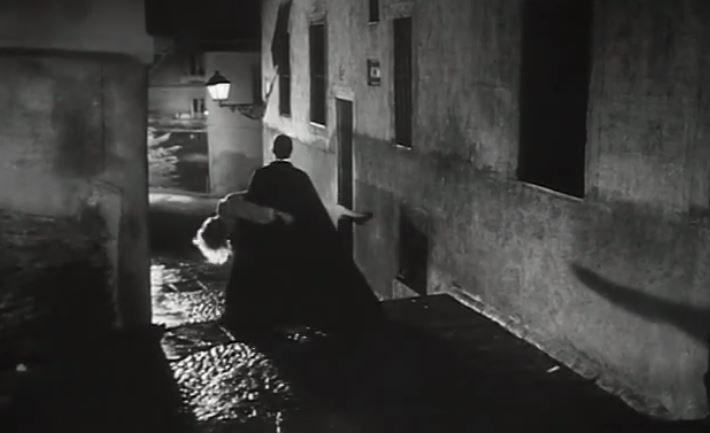 Orlof admiring the skin of one of his victims: 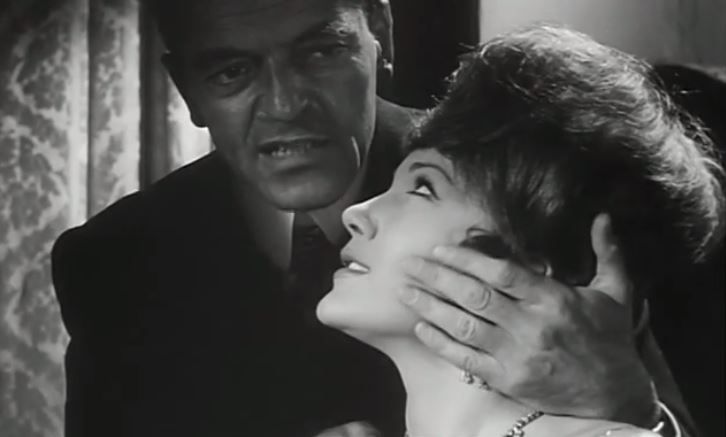 Morpho on the hunt: 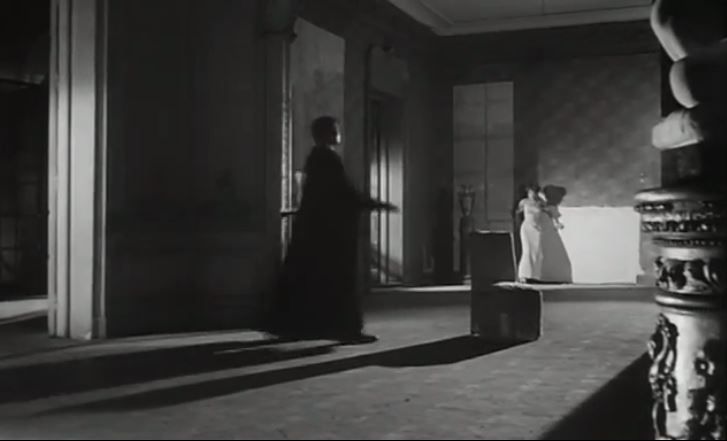
|
|
|
|
Post by aubrey on Jul 31, 2016 11:02:07 GMT
005 La Muerta Silba Un Blues (Death Whispers the Blues) (1962)  Conrado San Martín Danik Patisson Perla Cristal Georges Rollin An ex-arms dealer, retired to New Orleans (or Jamaica, depending on which version you see) is haunted by the ghost of a man he betrayed several years before. This film marks the introduction of two Franco characters he would go on to use throughout his career: Alfred (or Al) Pereira and (Paul) Radeck. Radeck is the arms dealer and Pereira the detective who tracks him down, with the help of some of society's outcasts, the poor (mainly) blacks living along the beach whose already precarious lives are going to be made impossible by Radeck's (presumably legal) land speculations. Pereira is played by Conrado San Martin, and he is immeasurably better than he was in Orlof – energetic and boisterous, like something out of Hemingway. Thrower thinks Georges Rollin as Radek is not menacing enough, though he seems fine to me. He is coldly handsome, like a cross between a young William Hartnell and Herbert Von Karajan, giving low-voiced orders while surrounded by a group of young hangers-on who all seem unaware of his past and probably wouldn't care anyway; they seem to have abandoned him not long into the film, and by the end his wife has as well. This is probably the best so far, a neat little thriller with a lot of excitement and good humour; it reminded me of the kind of thing that Welles might have done as a quickie. The plot is based around a jazz tune/ song called Rooftop Blues, supposedly written by a character in the film but which was actually done by Jess himself. It's a smoky, classy song that could have been sung by Julie London, and it makes you realise that Jess could have made a decent career in music if he'd wanted. Aside from the main plot there are some nice details: a group of children on the beach led by a slightly bigger girl who "sell favours", charging for carrying notes, etc; and the mixed race marriage of one of Pereira's friends, which is made obvious but not commented on: and the great fight at the end, between Radek's men and the outcasts (there is really no contest). Rooftop Blues (in English, from the film)Jess on the sax: 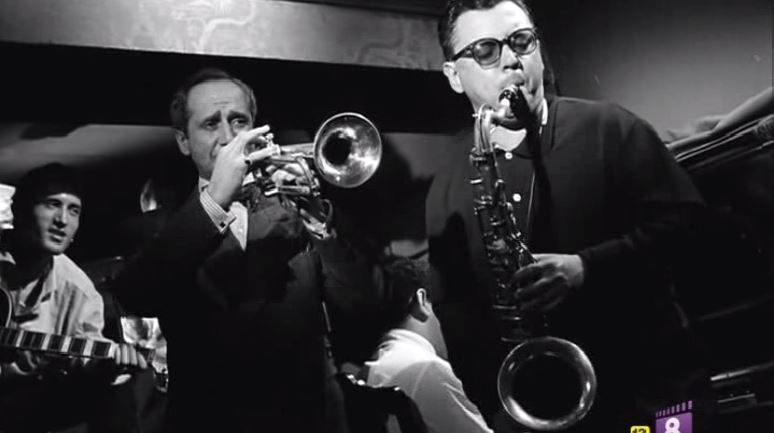 Dr Who/ Von Karajan sunbathing on a windy day: 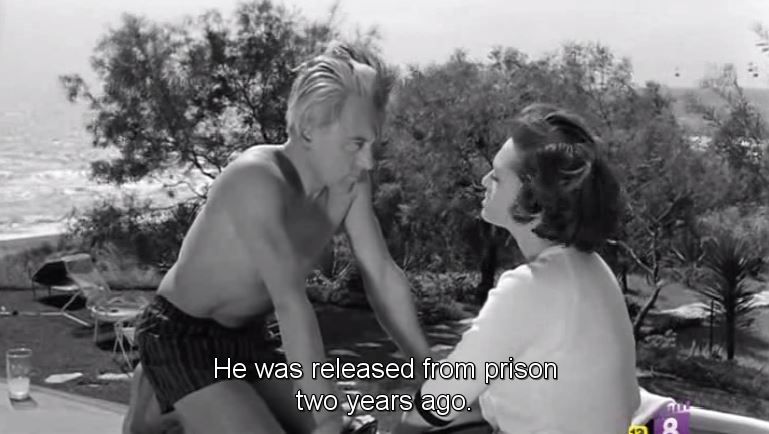 The children on the beach: 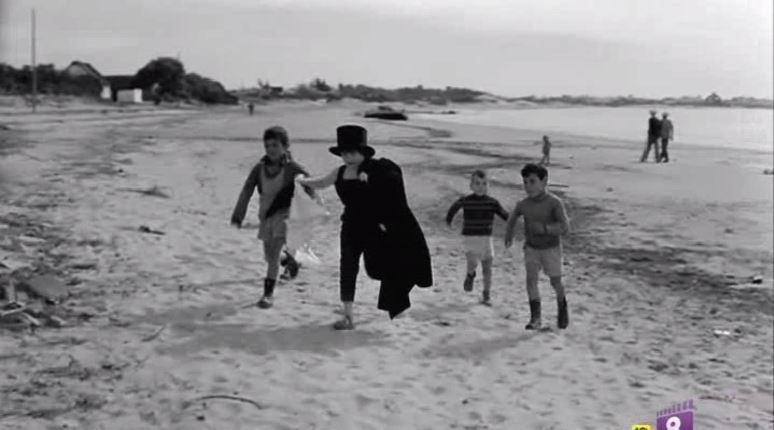
|
|
|
|
Post by aubrey on Jul 31, 2016 11:02:58 GMT
006 – The Sadistic Baron von Klaus (1962) Howard Vernon Hugo Blanco Gógo Rojo Fernando Delgado Paula Martel Ana Castor In another French/German town (in Germany, but near the border), the residents are haunted by the 17th century legend of Baron von Klaus, who abducted and killed several young women, always with the same curved blade. Eventually he was trapped and chased by the villagers out into the swamps adjoining the estate, where he disappeared, cursing the village and promising vengeance. Now the murders have started again. A journalist has been sent to get the story; he and the investigating officer are old adversaries, and quite a lot of the film is taken up with their sparring. There are a couple of comedy bumpkins, a professor of some sort, a nice barmaid: and even a Baron Von Klaus, who you know know is the murderer, look at those eyes! - (and the fact that he's played by Howard Vernon). He is very cagey about where he was on the night one of the murders took place as well. In the meantime, the Von Klaus matriarch is dying. Her son and his fiancé just make it back just in time for her to warn him about the old Count's room with her last words. Of course, he does the opposite of what she tells him and finds the Count's diary, thinks, This looks good. Fairly standard early 60s crime/horror, with some nice B&W photography; but what makes the film is a long-ish torture/murder sequence – amazing for the time I mean, with most of the business out of shot, but still effective. Not his best, then: but still decent. Country oafs: 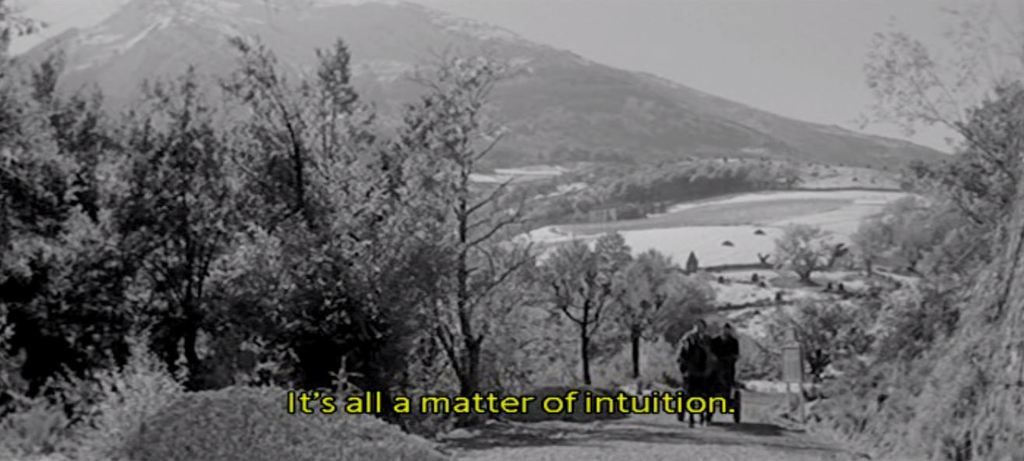 The reporter is briefed: 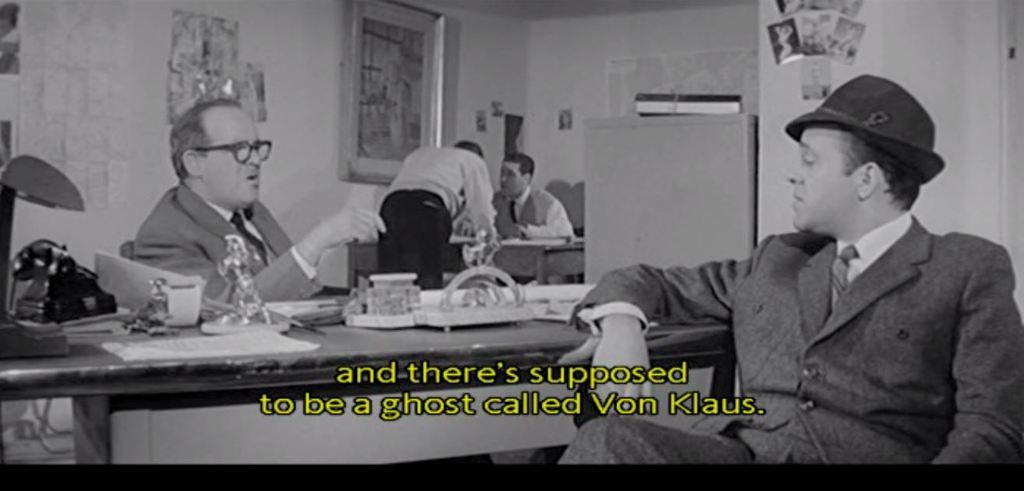 The lover's confession: 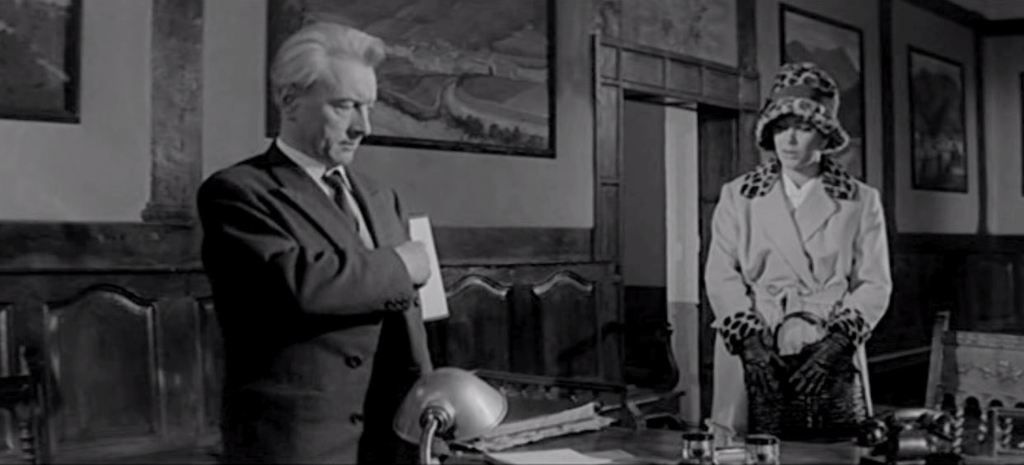 The murder: 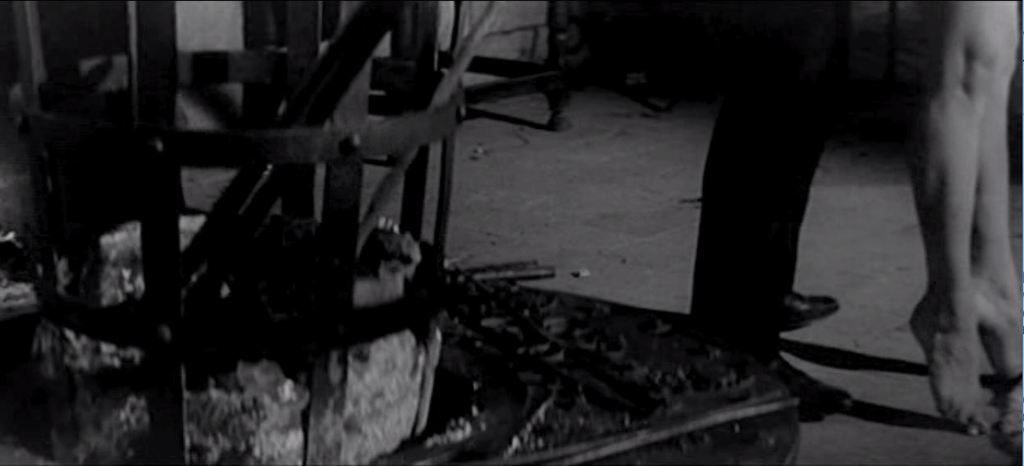 The reporter finds the diary: 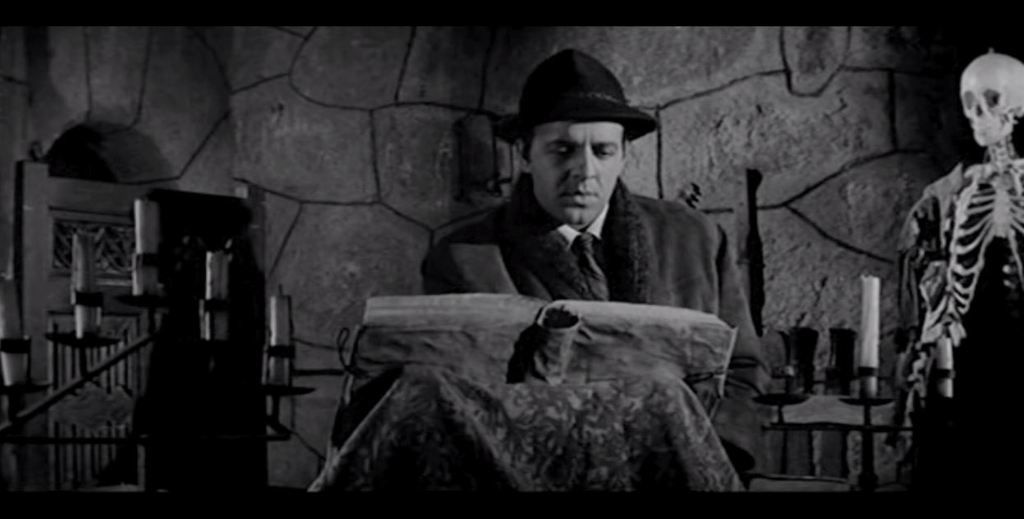 Back to the swamp: 
|
|
|
|
Post by aubrey on Jul 31, 2016 11:04:49 GMT
007 Rififí en la ciudad (1963) Fernando Fernán Gómez Jean Servais Laura Granados (with music by the great Yorkshireman, Daniel White) A few days before the certain election of a crooked but charismatic and populist candidate - Vote for LePrince and you will be Happy - in some unnamed but poor and sweaty S American country, an informer involved with his organisation goes missing, his body later thrown through the window of Mora, the police detective who had hoped he might provide enough evidence of criminal activity to stop the election. Mora, against the wishes of his wife, carries on the investigation: but now people working for LePrince are also being killed, by a mysterious assassin. This is another film that could have been made as a Welles quickie, a classy and effective thriller, with beautiful photography and lots of well-done set-pieces; the action is a little slow at times, and there are one or two narrative slips; but overall it works. LePrince is a sinister and charming villain (with “Perfect feet”, one of his minions says while giving him a pedicure(!)), but in the end weak and pathetic; Mora stumbles on like a tragic Maigret, but his wife is nothing like Madame Maigret (nothing like). There is an ending, satisfying if not happy: the informer was a bounder. You know LePrince is a wrong'un from his advertising: 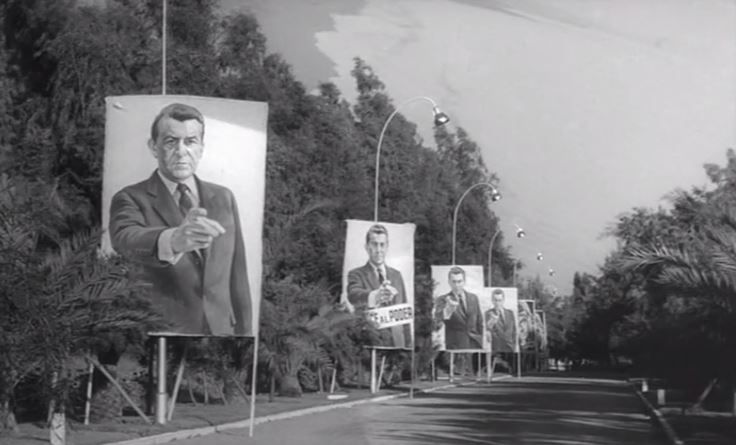 Waiting for the informer (due at 4.30): 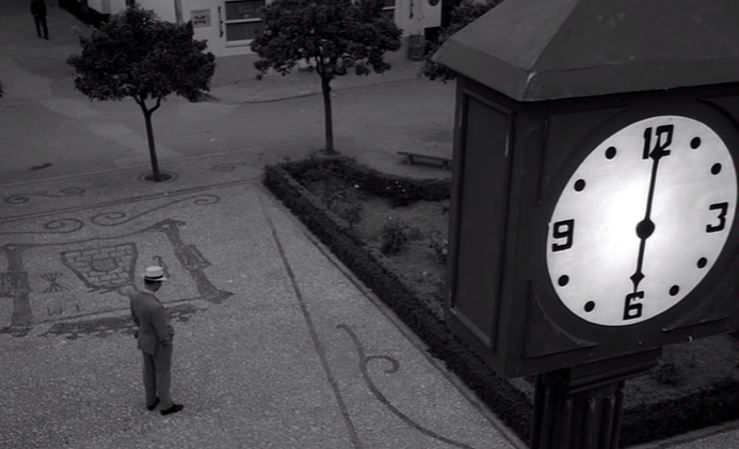 He never turned up (Jess lighting a theatrical fag in the foreground): 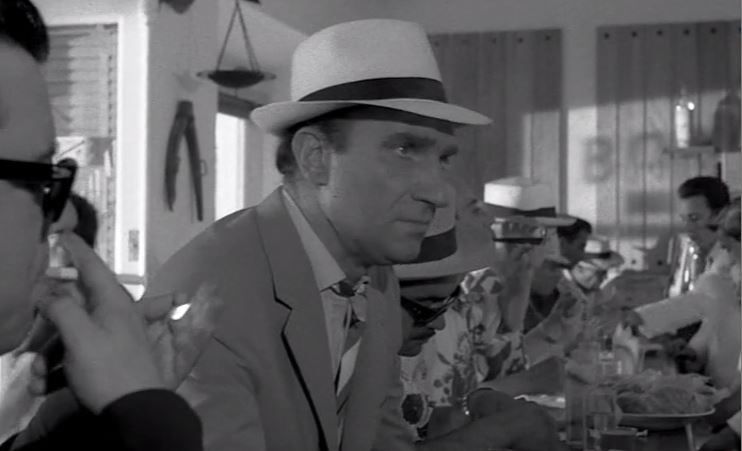 The weak link in LePrince's organisation is warned: 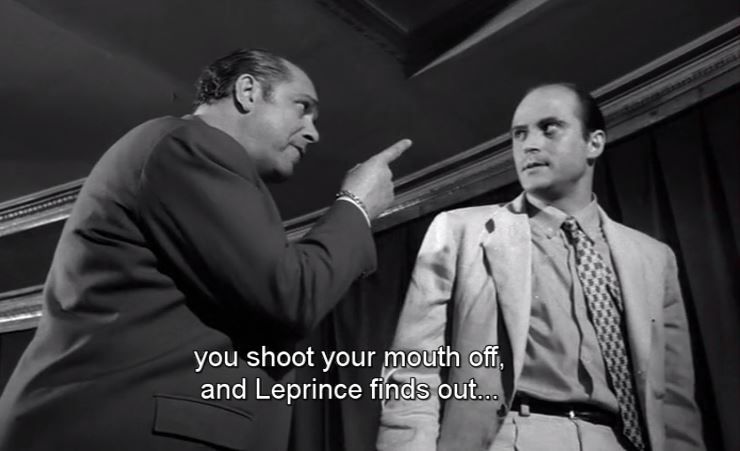 ...and killed a few minutes later:  Just before the showdown: 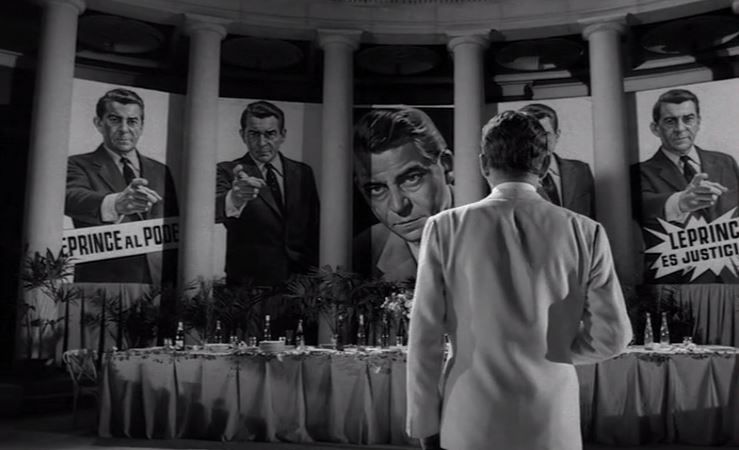 (He even has posters inside his own house.)
|
|
|
|
Post by marispiper on Jul 31, 2016 12:29:16 GMT
This is a bit of a niche interest Aubrey, eh?
Is it Spanish cinema in general you enjoy, or just this Franco? (who I've never heard of)
You always have the pic of his lovely Mrs on your posts I notice. That's devotion!
My only foray into Spanish film was Guillermo del Toro's Pan's Labyrinth.
|
|
|
|
Post by lana on Jul 31, 2016 12:56:25 GMT
This is a bit of a niche interest Aubrey, eh? Is it Spanish cinema in general you enjoy, or just this Franco? (who I've never heard of) You always have the pic of his lovely Mrs on your posts I notice. That's devotion! My only foray into Spanish film was Guillermo del Toro's Pan's Labyrinth.Brilliant film! |
|
|
|
Post by aubrey on Jul 31, 2016 13:08:22 GMT
European (continental) cinema in general, but especially Franco. There is something about his films - the mood of them - that I find really addictive. The early films are his most mainstream; later on they become more Jess-like - cheaply and quickly made, with lots of roaming, zooming camera work and slippery plots. Some people can't stand him: and you do need to adopt a different sensibility towards his work than you do to that of (say) Steven Spielberg: I much prefer Franco though.
Lina Romay (in my sig) doesn't come into them for a while yet - 1970 I think it is. She eventually worked as a co-director, writer, and editor on his films, as well as acting in them.
|
|
|
|
Post by marispiper on Jul 31, 2016 16:36:25 GMT
There's something about continental film eh? So much more atmosphere. I recently bought
Rififi, the Jules Dessin film from the 50s. There's a documentary after it about him and the making of the film. Fascinating!
I bought it because it was a similar robbery to the Hatton Garden heist.
|
|
|
|
Post by aubrey on Aug 1, 2016 17:29:28 GMT
The Jess Franco film was named in order to cash in on that, I think.
I used to love it when BBC Two would show French (usually) films on Saturday night - I remember Resnais's "The American Uncle", with Gerard Depardeau trying to hang himself off a door knob with his neck tie; or one (I have a copy, but can't remember what it's called) with a boy given his first cigar at a party, and then going to kiss a girl, and she tells him he has to choose between cigars and girls; he says "Le Cigar".
And then the seasons they had, of Buñuel, Hitchcock - and of French mainstream films, early on Tuesday evenings. Lots more. They still show a fair amount of stuff like that. but not so casually these days, and not in such great chunks - there were about 30 films in that Buñuel season.
|
|
|
|
Post by aubrey on Aug 16, 2016 6:12:26 GMT
008 El Llanero (1963) aka Le Jaguar José Suárez ... José Mendoza Sylvia Sorrente ... Lolita (as Silvia Sorrente) Todd Martin ... Lieutnant Alberto Kalman Manuel Zarzo ... Carlos Georges Rollin ... Colonel Saltierra Roberto Camardiel ... Juano Venezuela, 1863: During the confusion of civil war, the Mendoza ranch is raided by the forces of Col. Saltierra (Georges Rollin), who mean to massacre everyone living there; but with the help of a servant (Roberto Camardiel) Mendoza's young son José escapes. Saltierra is on the side of the victors in the war and takes over the mansion; decades later an avenger known as "the Jaguar" fights the government with a resistance group which hides in the mountains: later with the help (it turns out), of Sorrente's daughter, Lolita. Pretty well-done: a proto Spaghetti Western version of a Zorro-like story, played straight, and with sometimes surprising brutality. The church (unusually for Franco) is on the side of good, with the Priest a real hero, even given a bit of nervous comic business on the scaffold. There are lots of nice touches, including a couple of decent action scenes. The characters, within their types, are believable, and the story plays out nicely. The music is by Daniel White again, and probably more suited to a European Gothic horror, but it fits here surprisingly well. A decent Western for a sunny Sunday afternoon with the curtains closed (which is how I watched it): not great, but good enough. (My copy is not very good quality.) Saltierra's men gallop into town (note the hanged corpse): 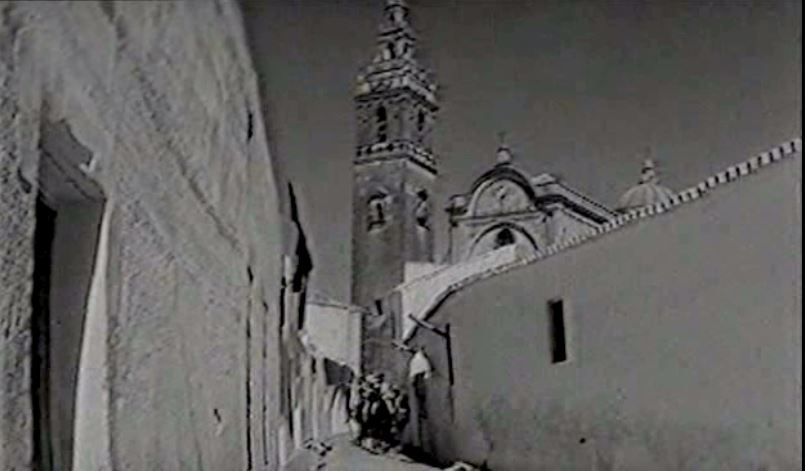 A robbery: 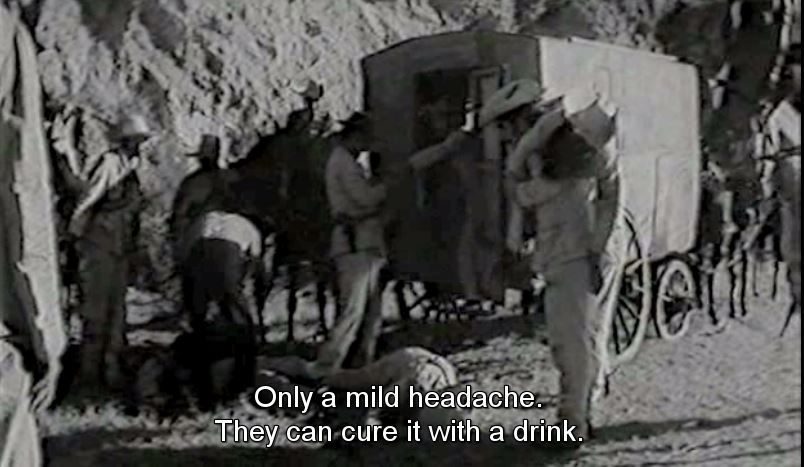 Enhanced Interrogation: 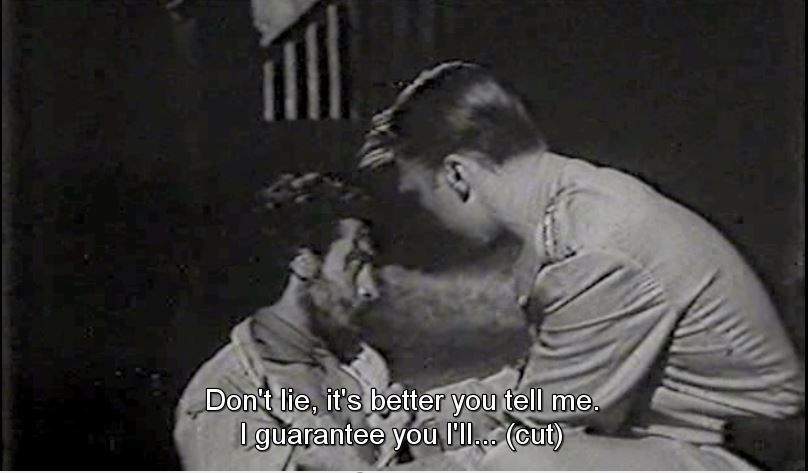 The Good Priest: 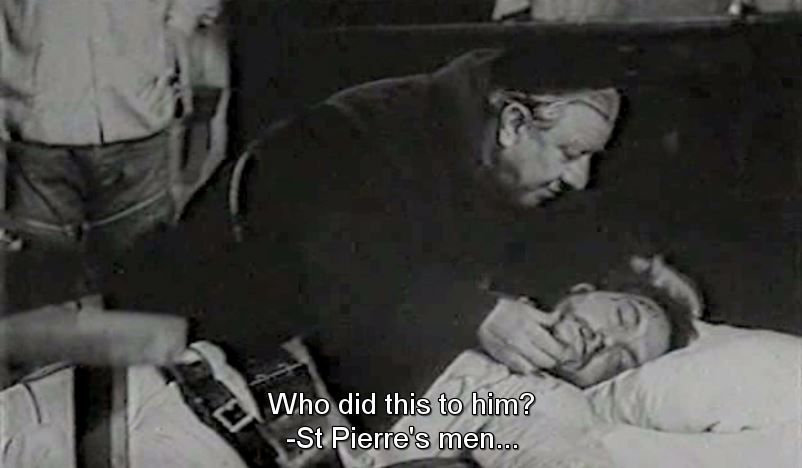 A daring rescue: 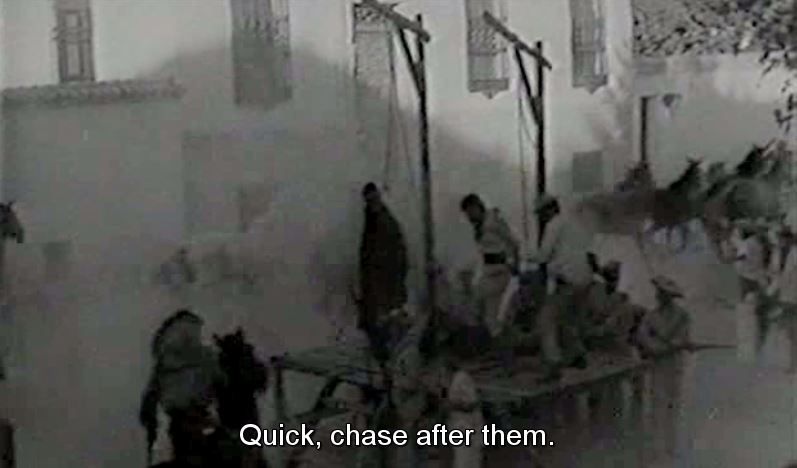 The final battle: 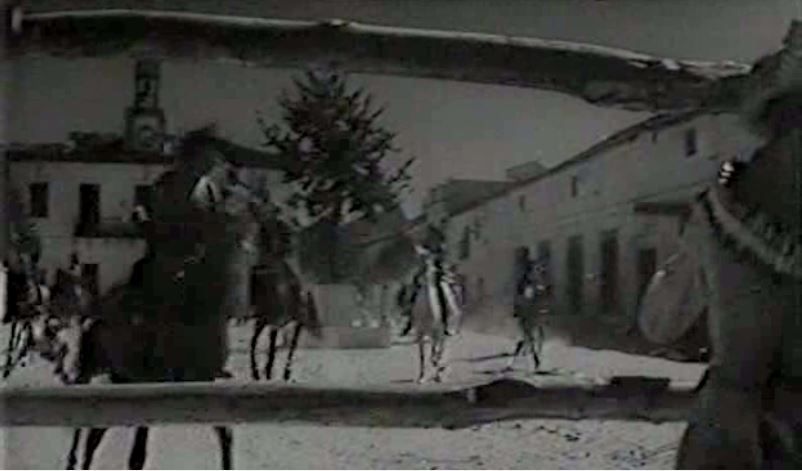
|
|